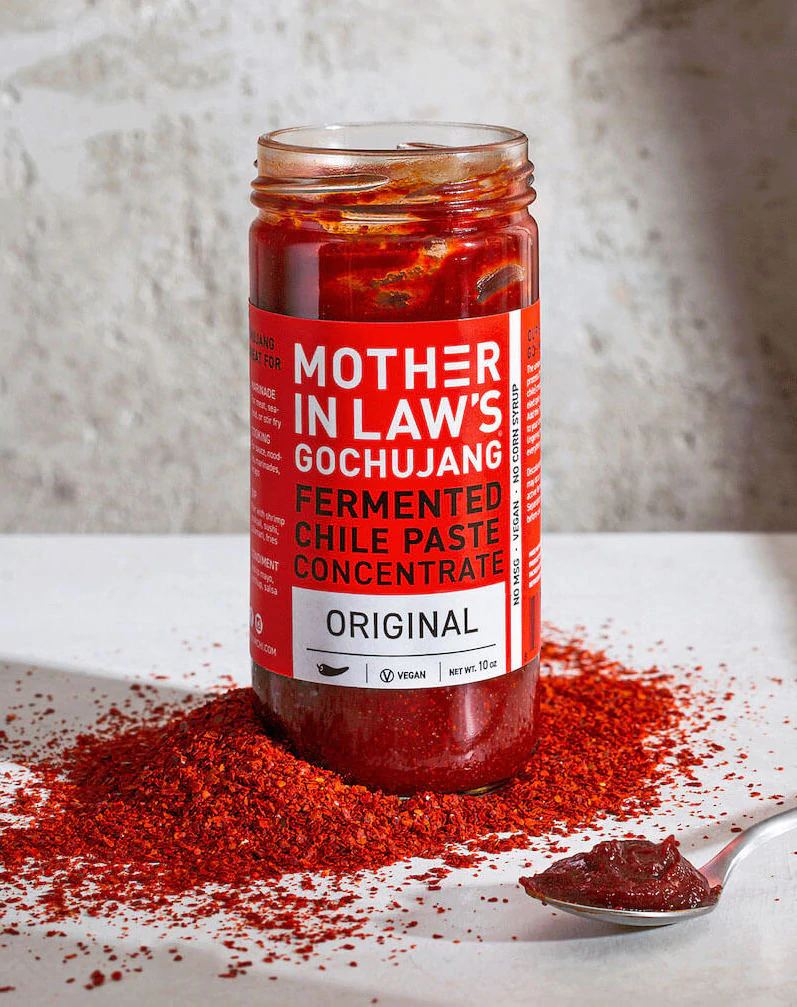Gochujang 101
What is Gochujang?
Gochujang is the most popular condiment in Korea, so popular in fact that it's often called "the ketchup of Korea". The word "gochujang" combines the two Korean words “gochu” (chile) and “jang” (fermented). The unique flavor of gochujang comes from a traditional urn fermentation process that can take anywhere from a few months to several years. Traditionally, every Korean home made its own batch of gochujang, which was mixed and then allowed to ferment for months in a porous earthenware pottery called onggi in the backyard.
What can I eat it with?
Gochujang is SO versatile. Traditionally, it is used in barbecue marinades, soups, stews, rice dishes, stir fries, and as a dipping sauce. It is also great on a peanut butter sandwich, mixed with ketchup and served with French fries, or spooned into an aoili. Visit our Recipes page and Instagram for delicious ideas.
Is it a hot sauce? Is it really spicy?
Gochujang has moderate heat, most of which comes in as back-heat that lingers on the tongue. Think miso meets chile paste.
The dimple of the lid of my jar of gochujang is raised - is it safe to eat?
Yes, even if the dimple on the jar is raised, the product is safe to eat. Raised dimples are caused by off-gassing from healthy fermentation bacteria that causes a build-up of pressure under the lid. The amount of off-gassing is variable from jar to jar, and so sometimes when people see one dimple down and one up in their order it is (understandably) confusing. The dimple being up or down is not a factor in determining whether gochujang is fresh/good to eat, unlike say a jam where a dimple issue would indicate bacteria. It is actually the desired result with kimchi and gochujang for there to be active good-for-you bacteria present and active inside the jar. Hooray for fermentation!
I have an unopened jar of gochujang that is leaking down the side - is it safe to eat?
As our gochujang is a living food, it does continue to ferment in the jar over time, and leakage is not a sign of it being faulty. What that signals is that the healthy bacteria in the gochujang is actively fermenting and the product is "trying to escape" from the jar. When the gochujang tries to escape, that pressure will also make the jar easier to open. The fermentation process is accelerated when the weather is warmer.
My gochujang looks darker than it did before - is it still safe to eat?
Gochujang is a long-lasting product, and as it ages it may change color slightly from bright red to a deeper, darker red. Any deepening in color is caused by contact with oxygen, and is not dangerous. Your gochujang is still safe to eat. [light/temperature causes dark oxygen, refrigerate paste after opening]
What makes your gochujang paste different from the rest?
Most other modern gochujang pastes are made using corn syrup, MSG, and other additives including pre-loaded spices that take away from the pure fermented flavor that develops during an extended urn fermentation process. At Mother-in-Law’s, our gochujang is made using traditional ingredients like malt syrup, rice flour, non-gmo soybeans, and non-gmo chile peppers. We never use MSG in our products so that the flavor you get is the true, natural flavor of fermentation.
Does gochujang have tomato in it?
No, gochujang does not contain any tomato. Its bright red color comes from finely milled gochugaru red chile.

